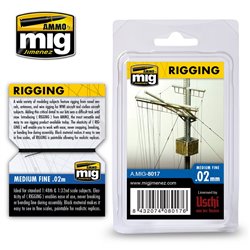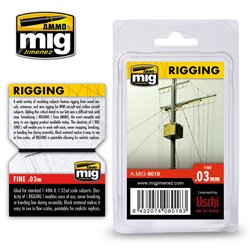There are many ways to strip paint from a model, some modellers have had success using IPA alcohol, others have...
No products
Product successfully added to your shopping cart
There are 0 items in your cart. There is 1 item in your cart.
Search Tips
What size thread is ideal to use for rigging telegraph poles on an OO gauge layout?
When it comes to rigging telegraph poles on an OO gauge Layout, it's important to choose a thread that is both strong and proportionate to the scale. In OO gauge, which has a base scale of 1:76, the ideal thread size for rigging telegraph poles is around 0.2mm to 0.3mm in diameter. This size will ensure that the thread is thin enough to appear realistic in scale, while also being a practical enough size to work with effectively.
One popular option for rigging telegraph poles in OO gauge is using fishing line. Fishing line comes in various thicknesses, so it's important to select one that is within the recommended size range. Nylon monofilament fishing line in the range of 0.2mm to 0.3mm diameter is a good choice. It is strong, flexible and can be easily painted to match the most appropriate colour for the telegraph lines.
When rigging telegraph poles, it is important to secure the thread firmly at both ends. It is possible to use small eyelets or hooks to attach the thread to the poles and the layout baseboard. Be sure to tie knots or use adhesive to ensure the thread stays in place.
Remember, the goal is to achieve a realistic appearance, so take plenty of time and be patient. When using adhesive, one good strategy to adopt is a pole-by-pole approach. Simply daisy chain the wires from one pole to the next, apply adhesive and allow this time to dry and cure before moving on to the next pole. Remember to allow a little sag in the wires between poles to help add that little bit of extra realism.
Rigging telegraph poles on a layout is a straightforward yet highly effective way of helping to bring the layout to life. Regardless of the method chosen, adopt a methodical approach and take plenty of time and enjoy the experience
Click here to receive the tips weekly in your mailbox. You can unsubscribe at any time.










